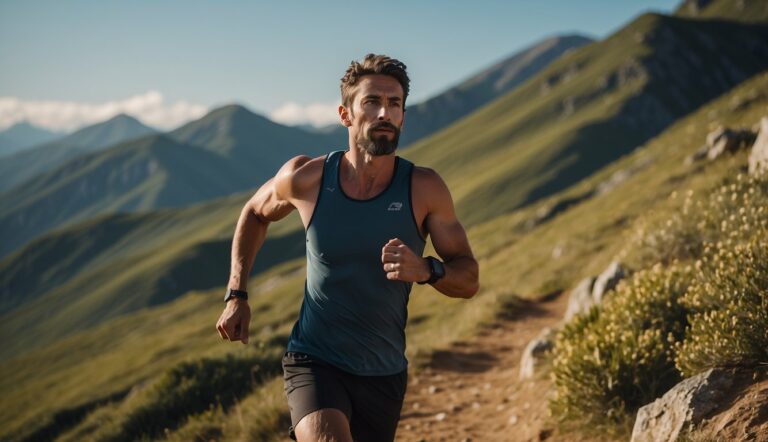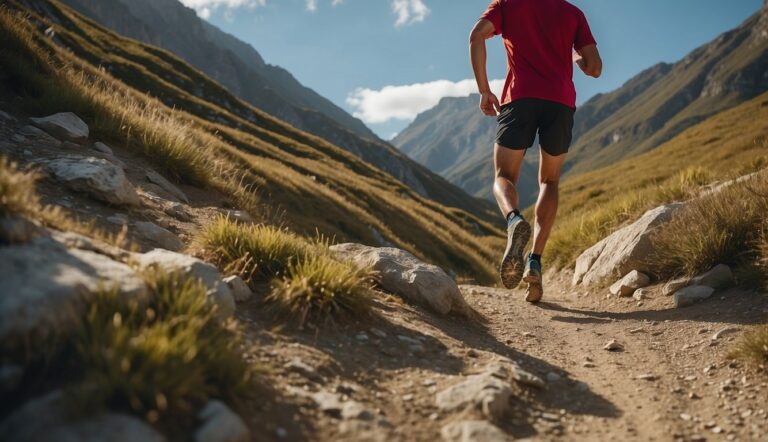Trail Running with Pets: Ensuring Safe and Enjoyable Dog Runs
Trail running with your dog offers a fantastic opportunity to build a strong bond while engaging in physical activity amidst the serenity of nature. As an avid runner and a UESCA certified running coach with extensive experience hitting the trails with my canine companions, I’ve observed first-hand the joy and benefits it brings. A dog can become more than just a pet; they can become a dedicated running partner who shares in the adventure and challenges presented by diverse terrains.
However, to ensure a safe and enjoyable experience for both you and your dog, it’s crucial to prepare adequately. It’s essential to understand your dog’s physical capabilities and limitations, as well as having them master basic obedience commands, particularly recall and heel. Ensuring your dog is healthy and capable of handling the demands of trail running is paramount. It’s also important to familiarize yourself with trail etiquette, potential hazards, and the importance of staying hydrated and energized.
Trail running with a dog requires more than just putting on a leash and hitting the path; it’s about fostering cooperation, ensuring safety, and savoring the shared moments of triumph as you both navigate through nature. I make it a priority to equip runners and their furry friends with knowledge and strategies to maximize the benefits of this activity while mitigating risks, because the right preparation leads to a rewarding trail running experience for both runner and dog.

Preparing Your Dog for Trail Running
Before hitting the trails with your furry companion, it’s crucial to ensure they are ready for the adventure. Preparing your dog for trail running involves assessing their health, understanding their breed’s needs, reinforcing training for safety, and selecting the appropriate gear.
Assessing Your Dog’s Health and Fitness
It’s vital to consult with your vet before starting your dog on a trail running routine, especially to confirm they are at the right age—too young, and their growth plates may not be fully closed, which could lead to injuries.
Regular check-ups can help detect early signs of conditions such as hip dysplasia or arthritis, which are prevalent with certain breeds and could be exacerbated by rigorous exercise.

Understanding Breed-Specific Considerations
Every breed has unique characteristics that may impact their ability to run on trails. For example, brachycephalic dogs—those with short noses like pugs and bulldogs—might face breathing difficulties, whereas breeds prone to joint issues, such as German Shepherds, may require additional care.
Knowledge of your dog’s breed-specific vulnerabilities is essential for a safe running experience.
Training and Obedience for Trail Safety
Effective communication through training is key for trail running. Your dog should respond to basic commands such as heel to ensure they stay close and safe on the trail. A well-trained dog is less likely to chase wildlife or get into trouble on the trail, making the experience enjoyable and stress-free for both of you.
Selecting the Right Gear for Your Dog
Choosing suitable gear can make a huge difference:
- Harness versus collar: A well-fitted harness can provide better control and is safer for dogs, distributing pressure more equally than a collar.
- Types of leashes: A hands-free dog leash allows you to run without holding onto the leash yet keep your dog secure.
- Ruffwear offers various durable and dog-friendly gear designed specifically for outdoor activities.
Always prioritize your dog’s comfort and safety when selecting gear, and ensure it is the correct size and fit for their body.
Essential Trail Running Practices with Dogs

When taking your dog along for trail running, it’s critical to focus on a proper warm-up, on-the-trail hydration and nutrition, and managing the dog’s energy and pace for a safe and enjoyable experience.
Start with a Warm-Up and End with a Cool Down
To begin, warm up your dog as you would for your own workouts. I usually start with a brisk 5-minute walk to stimulate muscle flexibility. Cooling down is just as essential; gradually decrease pace at the end of the run to ease into recovery. This helps prevent muscle stiffness and supports your pet’s recovery.
- Warm-Up: 5-minute brisk walk
- Cool Down: Gradual pace reduction over 5 minutes
Hydration and Nutritional Needs on the Trail
Hydration is paramount. I ensure my dog has access to clean water every 15-20 minutes during the run, more frequently in hot weather. For longer trails, I carry high-energy snacks like dog-specific energy bars to meet his nutritional needs.
- Water Breaks: Every 15-20 minutes or as needed
- Snacks: High-energy dog-specific bars for runs longer than an hour
Managing Your Dog’s Energy and Pace
Running with dogs requires attention to their energy levels and pace. It’s important to take scheduled breaks and tailor the intensity to your dog’s conditioning level. I observe my dog for signs of fatigue and adjust our pace accordingly, always erring on the side of caution.
- Breaks: Every 30 minutes or as needed
- Pacing: Tailored to the dog’s fitness level; gradual build-up over time
Safety and Etiquette on the Trail
When trail running with dogs, safety and etiquette should be top priorities. I ensure my dog is secure, the trail is respected, and we’re both prepared for environmental challenges.
Leash Laws and Trail Etiquette
Leash Laws:
- Always: Check local leash laws before you head out.
- Type of leash: A waist leash keeps hands free and controls the dog.
Trail Etiquette:
- Space: Give space to other trail users.
- Dog Poop: Use poop bags to remove waste, maintaining trail cleanliness.
Navigating Natural Hazards and Running Surfaces
Hazards to Address:
- Unpredictable weather conditions
- Varied terrain that may require a dog to navigate an obstacle course
Running Surfaces:
- Ensure your dog’s paws are ready for natural surfaces.
- In hot weather, test the ground temperature to prevent paw burns.
Recognizing and Preventing Health Emergencies
Hydration: Carry sufficient water for both you and your dog to prevent dehydration.
Preventing Heat Stroke: Watch for signs like excessive panting and adapt your outing to the conditions. Praise and gradual acclimatization to heat are key in prevention.
Understanding and Caring for Your Canine Runner

As an experienced UESCA certified running coach, I understand the intricacies of running with your dog. Ensuring your dog’s health and well-being during and after runs is paramount, and can be managed through careful observation and appropriate care.
Monitoring Your Dog’s Condition Post-Run
After a run, I carefully observe my dog’s behavior and physical condition. Immediate signs to look for include excessive panting, lethargy, or limping, which could indicate overheating or injury.
Hydration is essential, so I always provide a collapsible water bowl to ensure my dog can drink adequately. Proper recovery should not be ignored; just like us, dogs need time to rest and rejuvenate post-exercise.
- Post-Run Checks:
- Breathing rate and effort
- Gait and movement for any signs of discomfort or favoring limbs
- Paw inspection for cuts or injuries
- Signs of fatigue or overheating
Dealing with Common Injuries and Health Issues
If injuries are suspected, a prompt visit to the vet is the best course of action. For common issues like paw abrasions, I recommend using dog booties as preventative care during runs.
Over time, my goal is to build my dog’s endurance and fitness safely, tailoring exercise to their breed and individual health. Even so, minor injuries can occur, and praise and gentle care act as positive reinforcement, aiding in a smooth recovery process.
- Common Canine Running Injuries:
- Paw pad abrasions: Prevention with booties, treatment with vet-prescribed ointments.
- Muscle strains: Rest and careful monitoring; consult the vet if the condition persists.
- Dehydration/Overheating: Provide lots of water and shade, and avoid hot weather running.
Trail Running Advances and Activities

Incorporating a regular routine of trail running with your dog requires gradually increasing the distance and familiarity with the sport. Whether you’re new or experienced, here’s how to safely extend your running adventures and explore new activities with your canine companion.
Progressing to Running Longer Distances Together
My first tip is to start slowly and prioritize your dog’s endurance. Like humans, dogs need time to build up their ability to run longer distances. Begin with short distances and gradually increase the mileage based on your dog’s comfort and capabilities.
Pay attention to their body language and signs of fatigue. Incorporate regular breaks, especially on warm days, to prevent overheating and to maintain your dog’s enthusiasm for the activity.
I recommend monitoring both your dog’s and your own responses to the increased distance to ensure a safe progression in your training routine.
Exploring Canicross and Other Running Sports
Canicross is a sport where you run together with your dog, connected by a harness and bungee leash. It combines training, teamwork, and increased physical challenge. To get started with canicross, ensure your dog is comfortable with their harness and accustomed to running alongside you.
The key is a balance of control and freedom, allowing both of you to maintain a steady speed while running. Explore local groups or events to get involved in the canicross community, which can provide a supportive environment for both you and your four-legged partner.
Remember that while the sport is about speed, it’s also about building a bond and communication with your dog, so always keep their well-being in mind.






